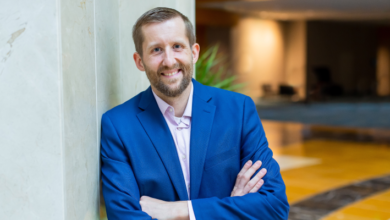Kodak’s Pension Windfall Points to $137 Billion Opportunity

(Bloomberg) — Inside Eastman Kodak Co., the once-iconic camera maker, a small pension investment team reaped such large gains in recent years that they windfalled themselves out of a job.
Most Read from Bloomberg
The group, managing a pool of retirement assets for more than 37,000 people, poured money into hedge funds and private equity and, in seven years, turned a $255 million deficit into a $1.1 billion surplus.
That represents a potential fortune for a company that spent the past decade stumbling to find a post-bankruptcy direction, lurching from crypto to Covid vaccines and back to a niche resurgence in film. Earlier this month, Kodak said it was moving management of the pension to an outside firm while it weighed how best to utilize the extra assets, which amount to almost triple the company’s market value.
The photography pioneer isn’t alone.
Across corporate America, buoyant markets and rising rates have turned a subset of employee pensions — defined-benefit plans — from a costly legacy of past promises into an unexpected nest egg.
The question now is how to tap it: a complex dilemma that’s shaping merger talks and corporate strategy, while attracting insurers and asset managers who see a lucrative opportunity in companies that want out of this volatile game altogether.
“This is the pension opportunity of a lifetime,” said Scott Jarboe, a partner at consulting firm Mercer. “Pension plans are better funded than ever.”
Companies with defined-benefit pensions in the S&P 1500 Composite Index — including household names such as Coca-Cola Co., Kraft Heinz Co. and Johnson & Johnson — were sitting on a combined $137 billion surplus as of Feb. 29, according to Mercer. In late 2016, they had a deficit of more than $500 billion.
The flush status of these frozen legacy plans starkly contrasts with the chronic shortfalls at public pensions that are meant to cover retirement costs for hundreds of thousands of teachers, firefighters and police officers, among other government employees. Corporate US workers now mostly save for retirement through 401(k) plans that remove retirement responsibility from employers. Those plans don’t have the fixed benefits for retirees that previous offerings did.
For most people, it has been “a shift from financial certainty to financial uncertainty,” BlackRock Inc. Chief Executive Officer Larry Fink said this week in his annual letter to investors. He warned of a retirement crisis facing the US. Even for the generous defined-benefit plans, it’s unlikely that the surplus riches will simply be handed over to retirees. Firms are more likely to use the extra cash for corporate purposes.
Using the surplus isn’t straightforward, but strategies for dealing with it could mean more business flowing to pension consultants and financial firms like Mercer, a unit of Marsh McLennan, and Goldman Sachs Group Inc. In the US, these pension plans represent a $2.5 trillion pool of assets that insurers and asset managers are eyeing as a fruitful source of revenue.
Simply taking the cash earmarked for retirees to use on other expenses comes at a high cost: a 50% federal tax that can balloon to as much as 90% when factoring in state and local levies.
“Could a corporate take the money out to pay for share buybacks?” said Michael Moran, a senior pensions strategist at Goldman Sachs. “You could, but you pay a huge tax, so it doesn’t make much sense.”
QuickTake: Why Slow-Burn Pension Crisis Is Getting Harder to Fix
Companies can avoid taxes if they use part or all of the surplus to increase benefits for the retirees in the pension plan. They can also transfer the surplus into a new plan that includes beneficiaries from the old one. Both options don’t leave much for the employer to use.
A more strategic route is actively cultivating the surplus and leveraging it as an M&A tool. Several firms are considering using their surpluses to help mitigate costs in a potential acquisition for a target company with an underfunded plan. Firms are allowed to merge plans, which can unlock the trapped surplus in one to fund the other.
International Business Machines Corp. decided to combine a pension plan with a $3.6 billion surplus with another to use the surplus to offset the roughly $550 million it paid annually to that plan. That means IBM won’t have to make another cash contribution for five to 10 years, saving on its pension costs and freeing it to use the money for other corporate purposes.
“A lot of companies are dusting off their pension plans and looking at what can be done,” Goldman’s Moran said. “Especially what to do with the trapped surplus. This is something they haven’t had to do since before the global financial crisis.”
Read More: Kodak Explores Tapping Pension Fund’s $1.2 Billion Surplus
Surpluses also give companies the chance to use the extra cash to pay for an otherwise costly and complex transaction that offloads the pension from the balance sheet to an insurer, which takes over the assets and the responsibility of payments to the retirees. In industry parlance, this is called a pension risk transfer.
Often, the first step before a risk transfer is similar to Kodak’s: Engage a money manager to take over investment of the assets and determine the best way forward.
These third-party firms, dubbed outsourced chief investment offices, or OCIOs, are usually part of financial companies or pension consultants. Companies are spending hundreds of millions of dollars a year on managing plans, including costs for human resources, paying investment managers and covering skyrocketing mandatory fees to the Pension Benefit Guaranty Corp., the US agency that backstops private sector retirement funds.
“That lends itself to a rationale for the company deciding to go the OCIO route or to an insurer,” said Sean Brennan, head of the pension risk transfer business at Apollo Global Management Inc.’s Athene insurance arm.
It also means executives can focus solely on their core businesses rather than also devoting time and attention to running a mini-asset management firm from within.
The popularity of getting rid of the plans is seen in the increasing size of deals in recent years for external money-management mandates. The industry’s assets are expected to grow more than 10% annually over the next five years, according to consulting firm Cerulli Associates.
The biggest providers of outsourced management globally are Mercer, with approximately $420 billion of assets, BlackRock ($400 billion) and Russell Investments ($375 billion).
Goldman Sachs, which manages about $250 billion, won a blockbuster mandate of roughly £23 billion ($29 billion) from BAE Systems Plc’s pension plan in September. Goldman, Mercer and other firms specialize in helping companies continue to invest the portfolio assets and can help broker the types of risk transfer deals to insurers that Kodak is likely considering and that many others have done with increasing frequency.
Activity reached a 10-year high of $48.3 billion in risk transfer deals in 2022 and $29 billion by the third quarter of last year, according to Goldman’s annual corporate pension study. This year is off to a strong start with several multibillion-dollar transactions, including two for insurer Prudential Financial Inc.: Shell Plc’s $4.9 billion plan for its US retirees and Verizon Communications Inc.’s $5.9 billion plan covering 56,000 retirees.
A majority of US companies with surplus plans are expected to do pension risk transfers in the next year or two.
More than half of the 152 senior financial executives who responded to Mercer’s annual CFO survey conducted in 2022 said they were considering doing a pension risk transfer in 2023 or 2024.
“With a surplus, there’s less of a chance a company needs to pay cash to top up the cost of the deal,” Athene’s Brennan said. “Doing a pension risk transfer is the ultimate de-risking.”
(Updates with Mercer survey in penultimate paragraph. An earlier version of this story corrected the name of the insurer involved in the Shell and Verizon transactions.)
Most Read from Bloomberg Businessweek
©2024 Bloomberg L.P.





